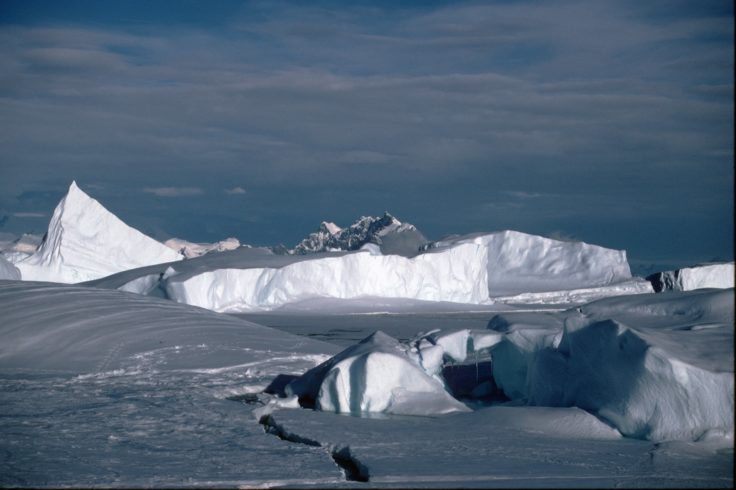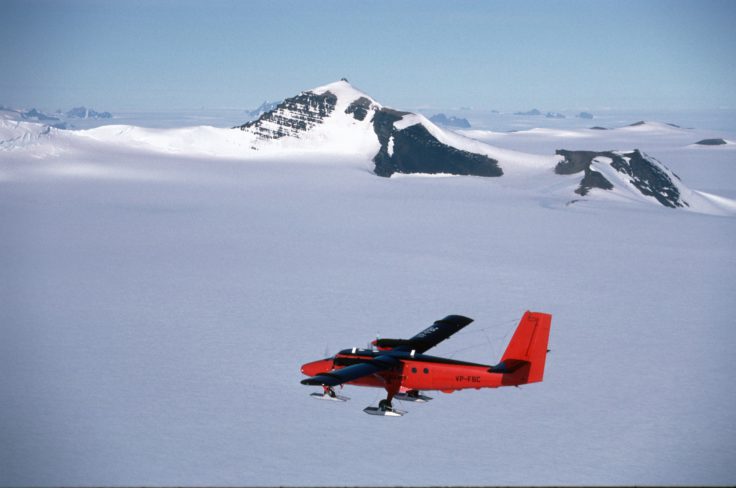NEWS STORY: Predicting polar ice loss
Most comprehensive ice loss model
A new international study is the first to use a high-resolution, large-scale computer model to estimate how much ice the West Antarctic Ice Sheet could lose over the next couple of centuries, and how much that could add to sea-level rise. The results paint a clearer picture of West Antarctica’s future than was previously possible. The study has been published in The Cryosphere, an open access journal of the European Geosciences Union (EGU).
“The IPCC’s [Intergovernmental Panel on Climate Change] 4th and 5th Assessment Reports both note that the acceleration of West Antarctic ice streams in response to ocean warming could result in a major contribution to sea-level rise, but that models were unable to satisfactorily quantify that response,” says Stephen Cornford, a research assistant at the University of Bristol, UK and lead-author of the study.
The work is a legacy of the ice2sea project, an EU funded programme which developed techniques and data to reduce uncertainty in the future contribution to sea level rise of melting ice in the polar regions. Prof. David Vaughan, Director of Science at British Antarctic Survey (BAS), was co-ordinator of the programme. He is also a co-author on the paper:
“This is our best effort yet to include all the key processes and all the main techniques developed during ice2sea, in one state-of-the-art ice sheet model of the most vulnerable part of Antarctica. Its results are within the range of the last IPCC projections, but we have even greater confidence in these projections of sea-level rise”.

West Antarctica is one of the fastest warming regions on Earth and its ice sheet has been stage to dramatic thinning in recent years. The West Antarctic Ice Sheet (WAIS) is out of balance because it is losing significant amounts of ice to the ocean, with the losses not being offset by snowfall. The lost ice, drained by the ice sheet’s several ice streams, amounts to a significant contribution to sea-level rise, which is expected to increase in the future.
Cornford and a team of researchers from around the world have now estimated how much the WAIS could contribute to global sea-level rise over the next couple of centuries. Their high-resolution, computationally demanding simulations capture future changes in West Antarctica with increased accuracy compared to previous models. The results reflect uncertainty in future greenhouse gas emissions, snowfall and ocean circulation, but the choice of a high-resolution model allowed the researchers to reduce the numerical error that often plagues ice-flow models.

“We expect future change in the West Antarctic Ice Sheet to be dominated by thinning in the Amundsen Sea Embayment, just as it is today, until at least the 22nd century. But other regions of West Antarctica could thin to a similar extent if the ocean warms sufficiently,” explains Cornford.
In their most extreme simulation, where the ice shelves progressively disintegrate over the next century, most of the major ice streams retreat by hundreds of kilometres. The WAIS as a whole would contribute some 80,000 cubic kilometres of lost ice to sea-level rise by 2100 and 200,000 cubic kilometres by 2200. This corresponds to a 20 cm increase in global sea level by the end of this century – sufficient to fill the Caspian Sea – and close to 50 cm by 2200. While these amounts would be enough to threaten low-lying cities and countries, the researchers point out this is an extreme scenario.
This comprehensive high-resolution study is a significant improvement from previous calculations, which were lower in resolution or scale, allowing researchers to make more accurate predictions about West Antarctica’s future.
The paper, Century-scale simulations of the response of the West Antarctic Ice Sheet to a warming climate was published in The Cryosphere on 18 August 2015.